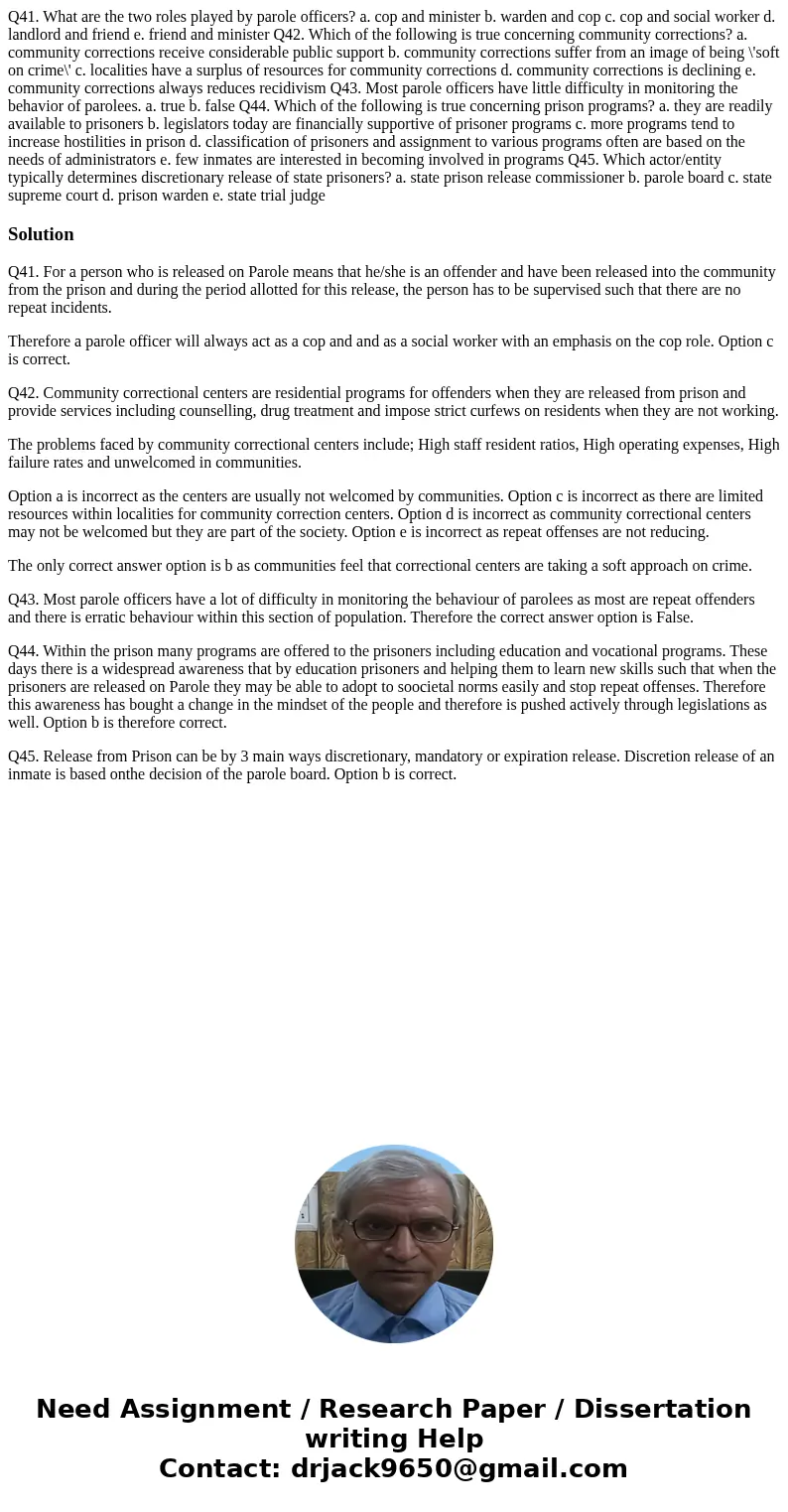Q41 What are the two roles played by parole officers a cop a
Q41. What are the two roles played by parole officers? a. cop and minister b. warden and cop c. cop and social worker d. landlord and friend e. friend and minister Q42. Which of the following is true concerning community corrections? a. community corrections receive considerable public support b. community corrections suffer from an image of being \'soft on crime\' c. localities have a surplus of resources for community corrections d. community corrections is declining e. community corrections always reduces recidivism Q43. Most parole officers have little difficulty in monitoring the behavior of parolees. a. true b. false Q44. Which of the following is true concerning prison programs? a. they are readily available to prisoners b. legislators today are financially supportive of prisoner programs c. more programs tend to increase hostilities in prison d. classification of prisoners and assignment to various programs often are based on the needs of administrators e. few inmates are interested in becoming involved in programs Q45. Which actor/entity typically determines discretionary release of state prisoners? a. state prison release commissioner b. parole board c. state supreme court d. prison warden e. state trial judge
Solution
Q41. For a person who is released on Parole means that he/she is an offender and have been released into the community from the prison and during the period allotted for this release, the person has to be supervised such that there are no repeat incidents.
Therefore a parole officer will always act as a cop and and as a social worker with an emphasis on the cop role. Option c is correct.
Q42. Community correctional centers are residential programs for offenders when they are released from prison and provide services including counselling, drug treatment and impose strict curfews on residents when they are not working.
The problems faced by community correctional centers include; High staff resident ratios, High operating expenses, High failure rates and unwelcomed in communities.
Option a is incorrect as the centers are usually not welcomed by communities. Option c is incorrect as there are limited resources within localities for community correction centers. Option d is incorrect as community correctional centers may not be welcomed but they are part of the society. Option e is incorrect as repeat offenses are not reducing.
The only correct answer option is b as communities feel that correctional centers are taking a soft approach on crime.
Q43. Most parole officers have a lot of difficulty in monitoring the behaviour of parolees as most are repeat offenders and there is erratic behaviour within this section of population. Therefore the correct answer option is False.
Q44. Within the prison many programs are offered to the prisoners including education and vocational programs. These days there is a widespread awareness that by education prisoners and helping them to learn new skills such that when the prisoners are released on Parole they may be able to adopt to soocietal norms easily and stop repeat offenses. Therefore this awareness has bought a change in the mindset of the people and therefore is pushed actively through legislations as well. Option b is therefore correct.
Q45. Release from Prison can be by 3 main ways discretionary, mandatory or expiration release. Discretion release of an inmate is based onthe decision of the parole board. Option b is correct.

 Homework Sourse
Homework Sourse